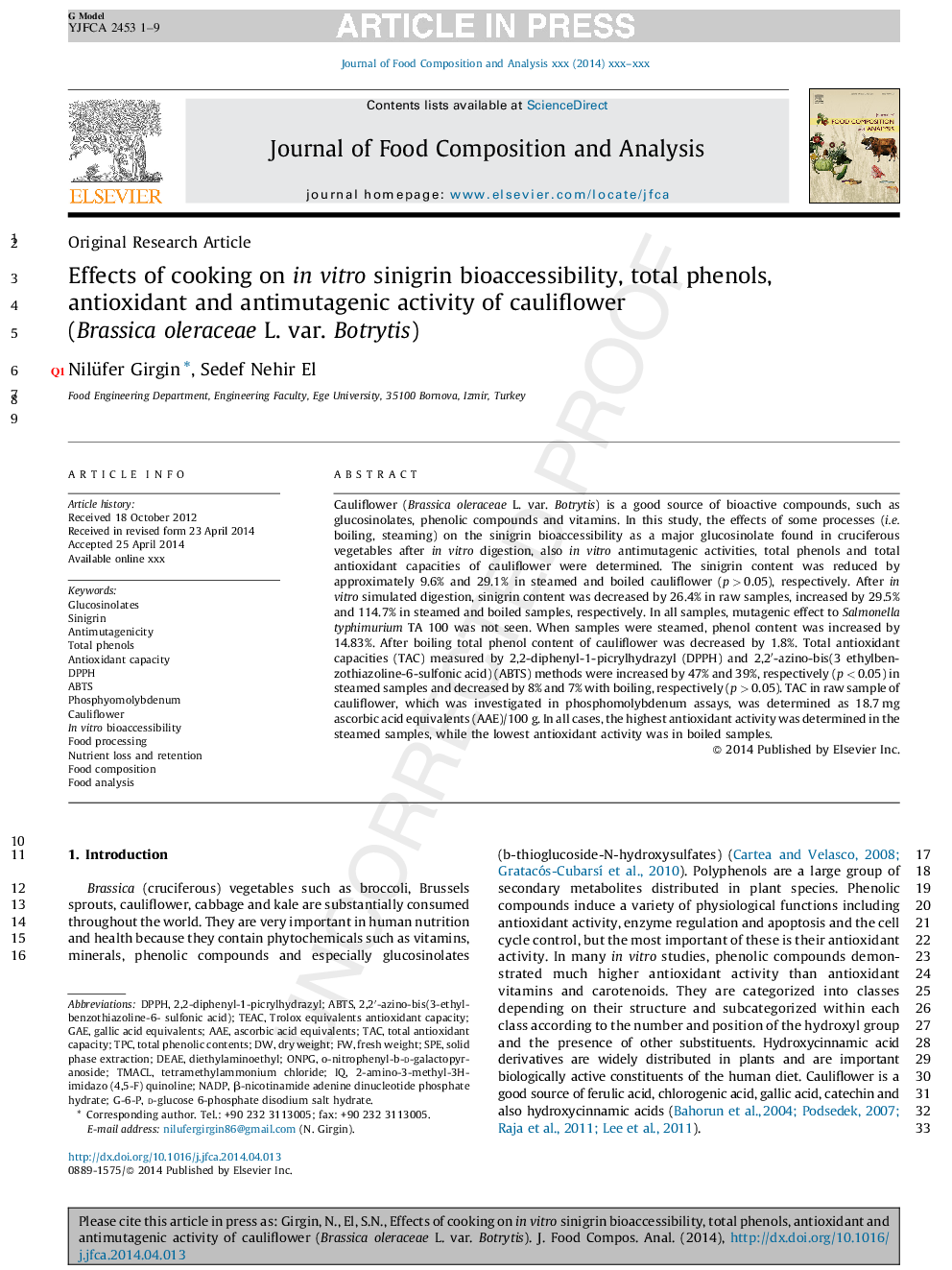| Article ID | Journal | Published Year | Pages | File Type |
|---|---|---|---|---|
| 7620687 | Journal of Food Composition and Analysis | 2015 | 9 Pages |
Abstract
Cauliflower (Brassica oleraceae L. var. Botrytis) is a good source of bioactive compounds, such as glucosinolates, phenolic compounds and vitamins. In this study, the effects of some processes (i.e. boiling, steaming) on the sinigrin bioaccessibility as a major glucosinolate found in cruciferous vegetables after in vitro digestion, also in vitro antimutagenic activities, total phenols and total antioxidant capacities of cauliflower were determined. The sinigrin content was reduced by approximately 9.6% and 29.1% in steamed and boiled cauliflower (p > 0.05), respectively. After in vitro simulated digestion, sinigrin content was decreased by 26.4% in raw samples, increased by 29.5% and 114.7% in steamed and boiled samples, respectively. In all samples, mutagenic effect to Salmonella typhimurium TA 100 was not seen. When samples were steamed, phenol content was increased by 14.83%. After boiling total phenol content of cauliflower was decreased by 1.8%. Total antioxidant capacities (TAC) measured by 2,2-diphenyl-1-picrylhydrazyl (DPPH) and 2,2â²-azino-bis(3 ethylbenzothiazoline-6-sulfonic acid) (ABTS) methods were increased by 47% and 39%, respectively (p < 0.05) in steamed samples and decreased by 8% and 7% with boiling, respectively (p > 0.05). TAC in raw sample of cauliflower, which was investigated in phosphomolybdenum assays, was determined as 18.7 mg ascorbic acid equivalents (AAE)/100 g. In all cases, the highest antioxidant activity was determined in the steamed samples, while the lowest antioxidant activity was in boiled samples.
Keywords
TMACLDEAEAAEGAETEACONPGTACG-6-PTPCNADPSPEtrolox equivalents antioxidant capacityABTSDPPH2,2-diphenyl-1-picrylhydrazylTetramethylammonium chlorideSolid phase extractiongallic acid equivalentsFood analysisFood compositionIn vitro bioaccessibilitydiethylaminoethylSinigrinAntioxidant capacityTotal antioxidant capacityFood processingTotal phenolic contentsascorbic acid equivalentsAntimutagenicityfresh weightdry weightTotal phenolsCauliflowerGlucosinolates
Related Topics
Physical Sciences and Engineering
Chemistry
Analytical Chemistry
Authors
Nilüfer Girgin, Sedef Nehir El,
